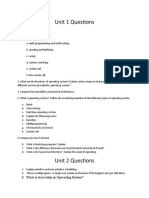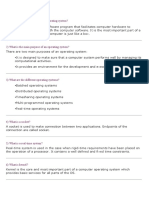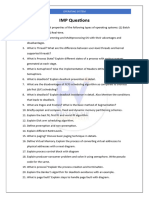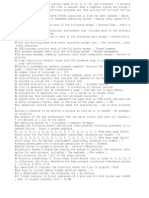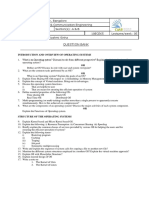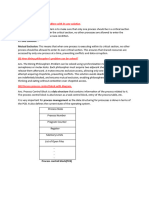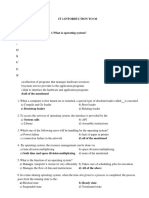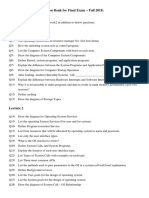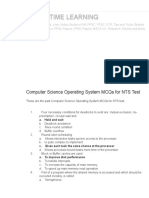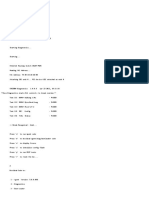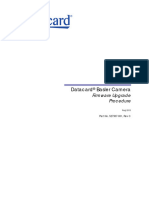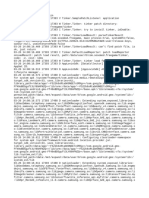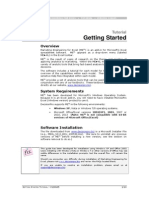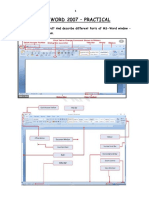0% found this document useful (0 votes)
37 views5 pagesQuestion Bank
The document contains a series of questions and answers related to operating systems, covering topics such as CPU scheduling algorithms, semaphores, deadlock avoidance, and memory management. It also includes explanations of various concepts like process control blocks, scheduling policies, and the differences between synchronous and asynchronous I/O. Additionally, there are prompts for detailed explanations and diagrams on several operating system concepts.
Uploaded by
vighnesharekar141Copyright
© © All Rights Reserved
We take content rights seriously. If you suspect this is your content, claim it here.
Available Formats
Download as PDF, TXT or read online on Scribd
0% found this document useful (0 votes)
37 views5 pagesQuestion Bank
The document contains a series of questions and answers related to operating systems, covering topics such as CPU scheduling algorithms, semaphores, deadlock avoidance, and memory management. It also includes explanations of various concepts like process control blocks, scheduling policies, and the differences between synchronous and asynchronous I/O. Additionally, there are prompts for detailed explanations and diagrams on several operating system concepts.
Uploaded by
vighnesharekar141Copyright
© © All Rights Reserved
We take content rights seriously. If you suspect this is your content, claim it here.
Available Formats
Download as PDF, TXT or read online on Scribd
/ 5




